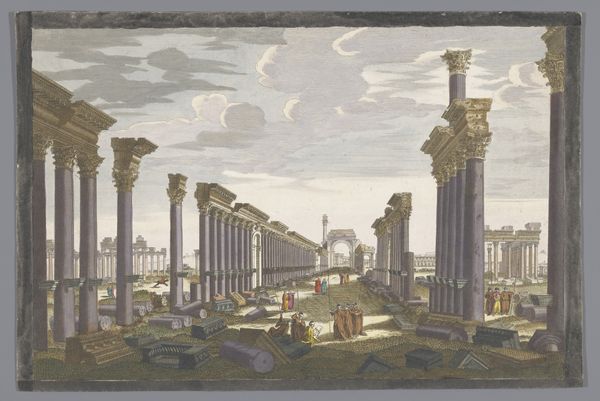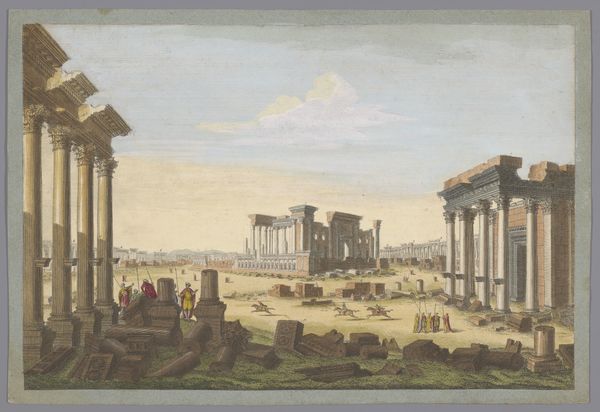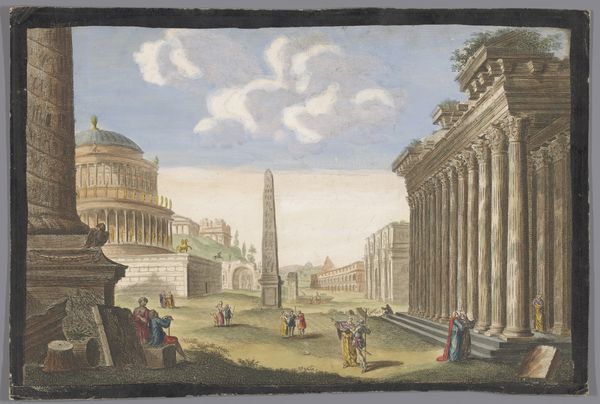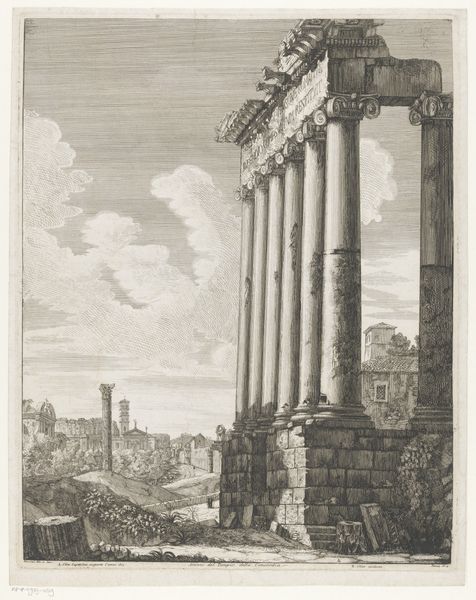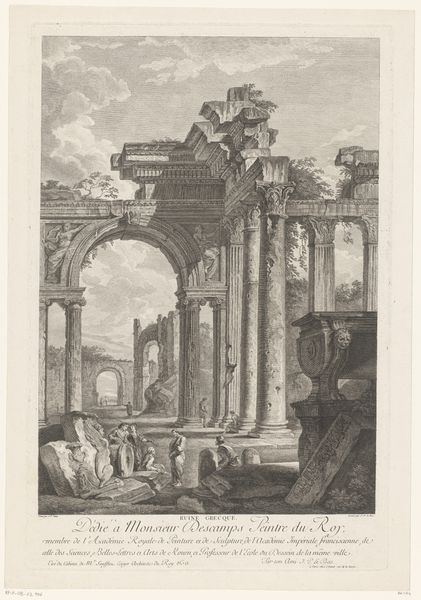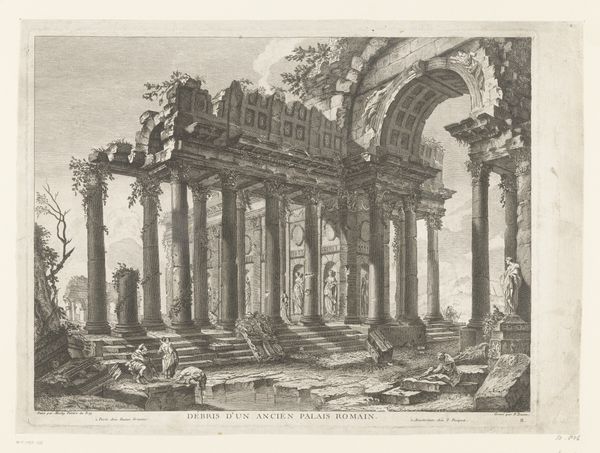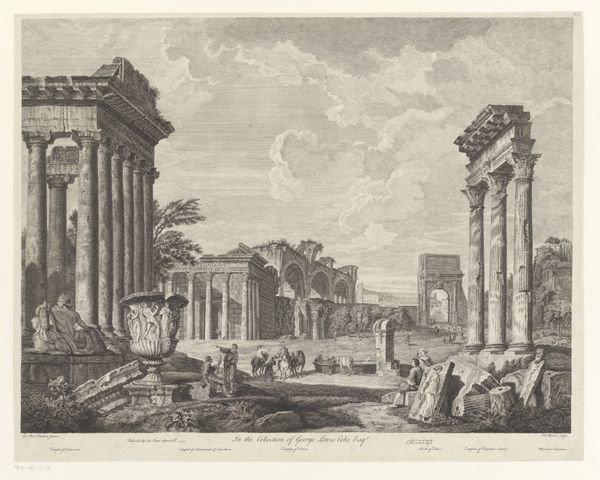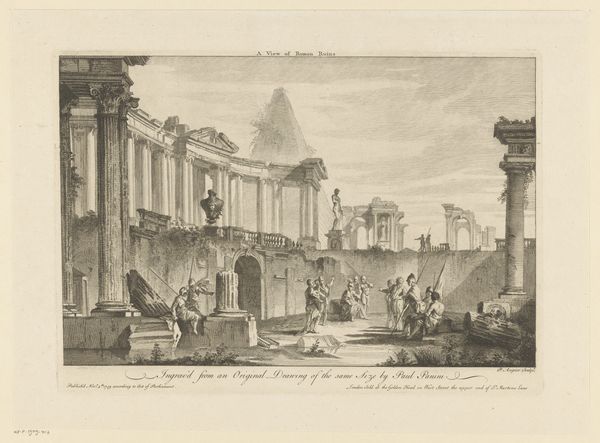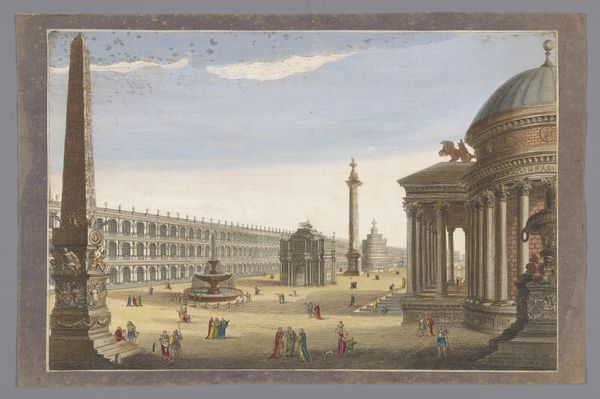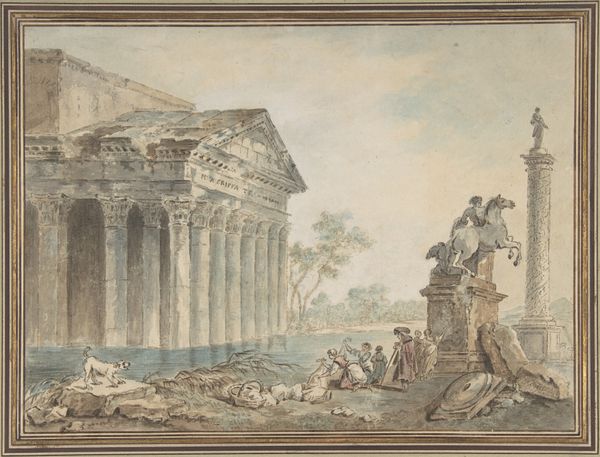
Gezicht op de ruïne van de boog van de zuilengalerij te Palmyra, gezien vanaf de westzijde 1745 - 1794
0:00
0:00
robertsayer
Rijksmuseum
drawing, coloured-pencil
#
drawing
#
neoclacissism
#
coloured-pencil
#
landscape
#
coloured pencil
#
underpainting
#
ancient-mediterranean
#
arch
#
watercolor
Dimensions: height 278 mm, width 422 mm
Copyright: Rijks Museum: Open Domain
Editor: This is "View of the Ruins of the Arch of the Colonnade in Palmyra, Seen from the West Side" by Robert Sayer, probably made sometime between 1745 and 1794. It’s a colored-pencil drawing of an ancient site, but it feels so... clinical? Almost like an architectural diagram rather than a romantic ruin. What do you see in this piece? Curator: Ah, yes. Clinical is one way to describe the Neoclassical obsession with ruins! Imagine the artist, Robert Sayer, standing there, not lost in melancholic reverie, but meticulously documenting every fallen column, every architrave fragment. This wasn't about *feeling* the past, it was about *cataloging* it, owning it visually. What strikes me is the almost unsettling juxtaposition of precise detail and the inherent decay. It’s as if he’s trying to freeze time, to capture the 'correct' or 'ideal' state, even though everything around him is crumbling. Editor: That tension between precision and decay is interesting. So, it's less about historical accuracy and more about projecting an ideal onto a ruin? Curator: Precisely! The past becomes a stage, doesn't it? And the artist, our director, carefully arranges the props – the crumbling columns, the distant figures – to convey a particular message: order wrested from chaos, knowledge extracted from time's relentless march. Even the limited colour palette adds to this feeling of measured observation. No dramatic sunsets here, no swirling mists. Editor: It's fascinating how that controlled palette affects the overall mood. I initially saw it as detached, but now I see that control *is* the point. The ruins almost become scientific specimens! I came into this thinking about art’s romantic side but now realize this almost hyper-real perspective might actually say more about how humans relate to time and their need to grasp what’s inherently fleeting. Curator: A splendid realisation! Sometimes, the greatest romanticism is in the refusal to be swept away by emotion, to meet even ruins with a steady hand and an inquisitive mind. Robert Sayer almost captures a human ambition: not to let memory turn to dust.
Comments
No comments
Be the first to comment and join the conversation on the ultimate creative platform.
